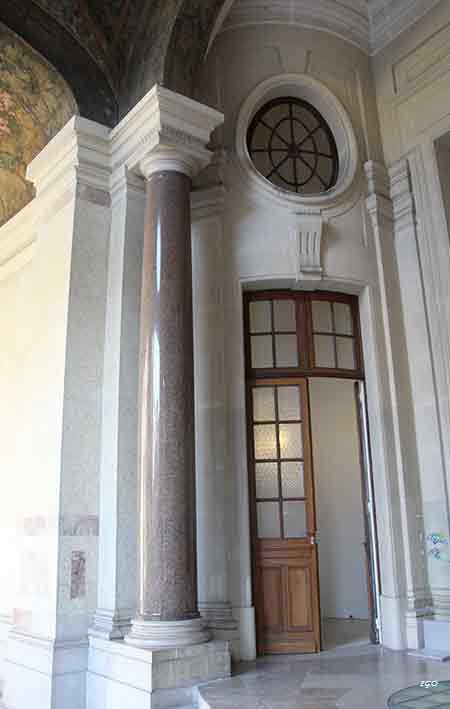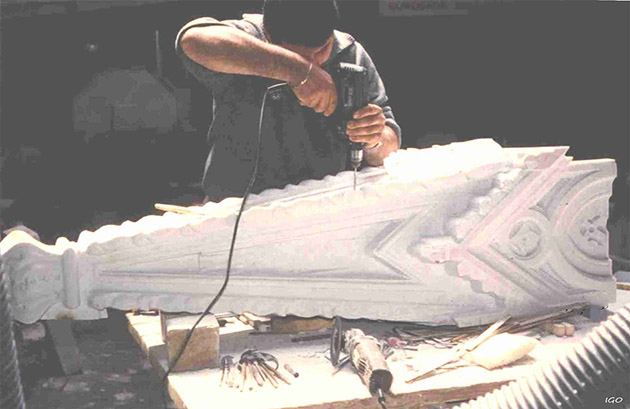 - Welcome - Stone
- Welcome - Stone
Stone
Stone can be cut, shaped, transformed, and polished. Extraction methods have been modernized over the centuries, but knowing the techniques is essential for the transformation and cutting of this rock.
Marble
Marble is a rock that reveals all its splendor after polishing and is considered a noble material that features different colors depending on its place of origin. Carrara marble, for example, is quarried in Italy in the mountainous region of the Apuan Alps. It is known for its whiteness and is also appreciated for its veining.
The first phase is the extraction of the stone in the quarries with suitable equipment to move these large blocks. The second step is sawmill cutting with high-performance digital tools to reduce costs. Then comes the treatment of the marble with sanding and polishing.

Marble column
Mosaicist
A mosaic is an assembly of fragments of stone practiced for over a thousand years. Beyond the artistic side, through the finesse of execution that it teaches us, the discoveries of the large rooms in the oldest temples enabled us to expand the knowledge of archaeologists.
The main methods are direct and indirect laying. The first way consists of gluing the tesserae directly to the support. The indirect method called "reversal" must replicate the upside-down model.
To obtain a range of varied shades, the fragments used are different types, like fragments of enamel, marble, onyx, agate, smalt, and colored glass. The regularity and size of mosaic tiles influence the visual impression.

Saint Paul mosaic by Auguste Labouret, mosaicist, and master glassmaker.
Plasterer
He manufactures mainly ornaments made from plaster and a vegetable binder in the form of tow fibers. He creates cornices, rosettes, and ceilings, but he can also express his artistic talent with larger pieces such as statues. He must design the mold that he will then use for the material to take the desired shape.
The use of the term plaster (staffeur in French) is quite recent, but the technique is ancient. Stucco made of lime and marble powder was in vogue during the Renaissance period. It was used to decorate stylish apartments and castles in France and several European countries. The use of colors in relief decorations was known long before among the Greeks and Romans.

Cornices molded in light color, adorn this wall.
Stonecutters
The mission of the stone mason is to work mainly on monuments and restore parts damaged by the wear and tear of time. For the most degraded areas, an identical copy must be created.
Cut stone is a sustainable material with qualities in terms of energy. Although the stone blocks weigh heavily, handling must be done with care because this stone is soft. Nowadays, the stone blocks are prepared upstream with a machining center to save time.
The cutter will first roughhew the stone, or scab the stone. He cuts it in the form of sides and chamfers, leaving enough material around the shapes he wishes to achieve. The assembly of the various elements during the final installation may also require some touch-ups to be well-positioned.

Milan Workshop, near Duomo Square.
